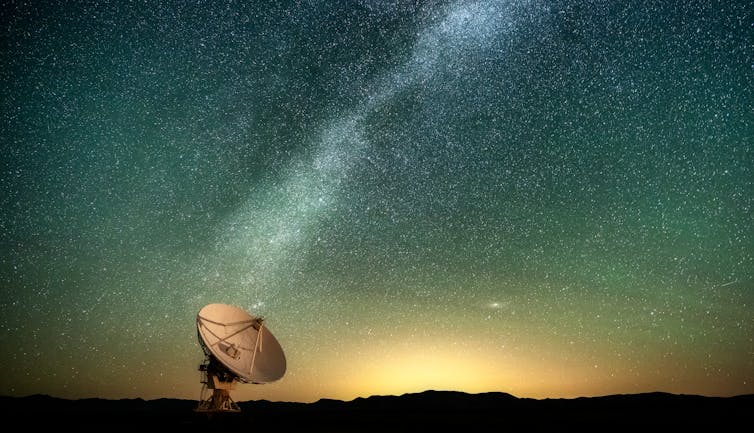A new book examines the culture of science fiction in the Muslim world
Islam and science fiction may not immediately seem like a natural pairing, but the Muslim world has indeed fostered a fascinating history within this genre

Estimated reading time: 6 minutes
In his book titled Islam, science fiction, and extraterrestrial life: The culture of astrobiology in the Muslim world, Jorg Matthias Determann, an author and academic based in Qatar, delves into the exploration of "scientific imagination" as expressed through various forms of media, including literature and film. The book encompasses a wide range of associated themes, such as space, time, world building, extraterrestrial life and ufology.
It is quite fitting that the opening chapter 'Lord of the Worlds' is a reference to the first surah of the Quran, Al-Fatihah, which the author explains, based on a literalist interpretation, supports the popular Sci-Fi concept of the plurality of worlds with the expression Rabb Al-Alamin or Lord of the Worlds, while other verses "were vague enough to allow for diverse visions of the universe." With regards to alternative life forms, we read how "the encounter of human and jinn had been part of Islamic literature starting with the Qur'an itself."
Throughout the book, Determann challenges and queries the assumption that religion and authoritarianism have stifled science fiction and creativity in Muslim lands and whether secularism was more conducive for the scientific imagination than "Islamism".
"Repression probably helped science fiction more than hurt it," Determann argues, as censorship often encourages writers to disguise criticism of authorities with metaphors set "in future times and on distant planets." The disappointments of both the post-colonial era and the Arab Spring also gave rise to dystopian novels, "as a form of literary resistance."
However, the reader may be surprised to learn that the Syrian government actively supported science fiction, even throughout the decade-long Civil War, which included the publication of a literary magazine, Science Fiction. Although the author questions whether this was a form of "'commissioned' or "licensed criticism'" of the government. Meanwhile, prosperous, yet authoritarian states in the Gulf embraced top-down "paternalistic futurism," with Saudi Arabia's NEOM smart-city project or the UAE's ambitions to establish a colony on the planet Mars by 2117.
One of the book's notable strengths is its balanced approach to the subject matter. Determann acknowledges the diversity of opinions within the Muslim world, spanning the Middle East and North Africa to South and South-East Asia, highlighting both conservative and progressive perspectives. This allows readers to gain a comprehensive understanding of the complex relationship between Islam, science fiction and astrobiology – "the study of life in the universe."
In addition to examining prominent and lesser-known science fiction authors and filmmakers, the author illustrates how science fiction narratives, both from within and outside the Muslim world have shaped scientific imagination. Western periodicals and literature left a considerable impact, and "borrowings from Hollywood were hard to miss," with clichés and copycat movies proliferating across multiple Muslim-majority countries.
Yet at the same time, "Western productions drew on Middle Eastern cultures and landscapes," such as Dune or Star Wars being shot in Tunisia – even Luke Skywalker's home planet, Tatooine, is set in a southern Tunisian town. The cross-fertilisation of ideas takes on a more nuanced dimension with the growing contribution of Muslim futurists in the diaspora.
The section on Muslim Ufology was particularly fascinating, where sightings of unidentified flying objects were as common as anywhere else in the world as they were in the Muslim world, which "also participated in global knowledge production about flying saucers," as "Muslims offered new perspectives" on the phenomena, including the theory that they could very well be jinns. This would go onto feeding the Western imagination and perception in popular culture. Beyond the mainstream Muslim community, Determann also sheds light on "Islamic UFO religions", most prominent of all being the Nation of Islam (NOI) group in the US, which drew on Afrofuturism.
As other reviews have mentioned, the book occasionally becomes overly detailed, potentially overwhelming readers who are less familiar with the subject matter. In spite of this, Islam, science fiction, and extraterrestrial life encourages readers to broaden their horizons and challenge preconceived notions about the relationship between Islam and science fiction. By delving into this lesser-known aspect of Muslim culture, one can appreciate the cultural diversity and creative expressions that exist within the Islamic world…and beyond.
Source: Middle East Monitor under CC BY-NC-SA 4.0
What's Your Reaction?
























